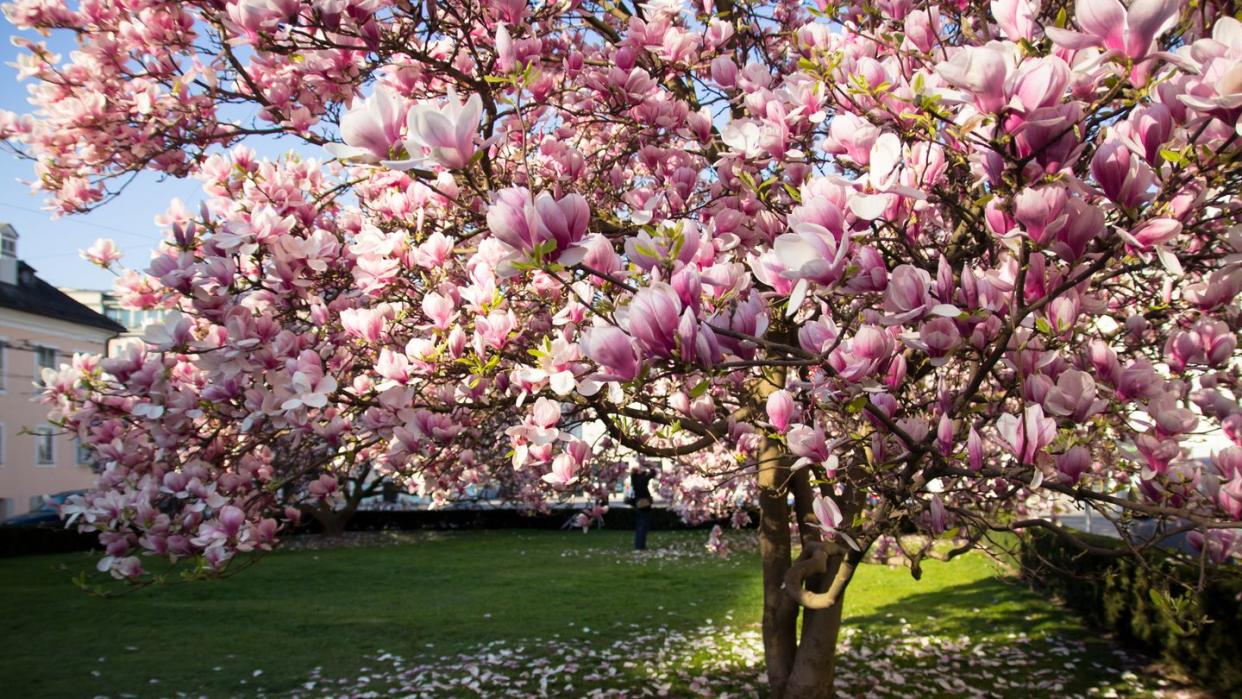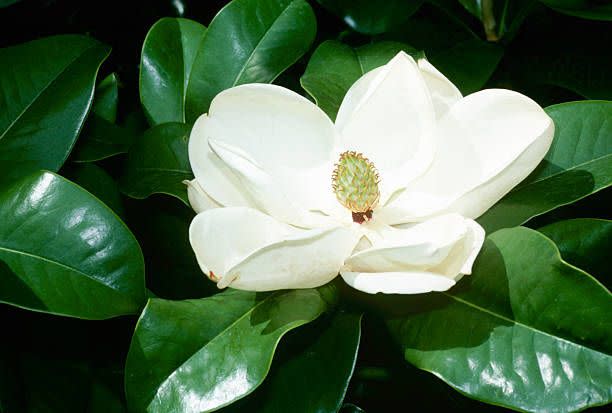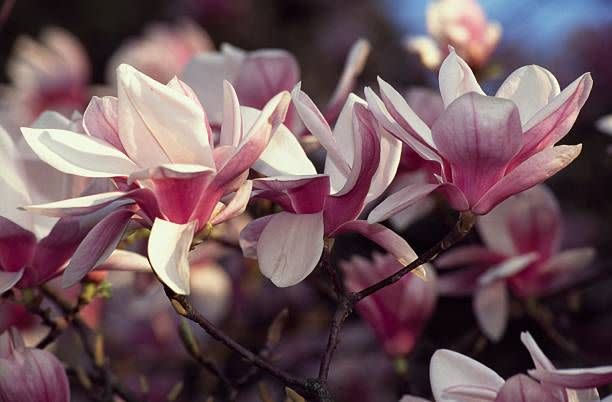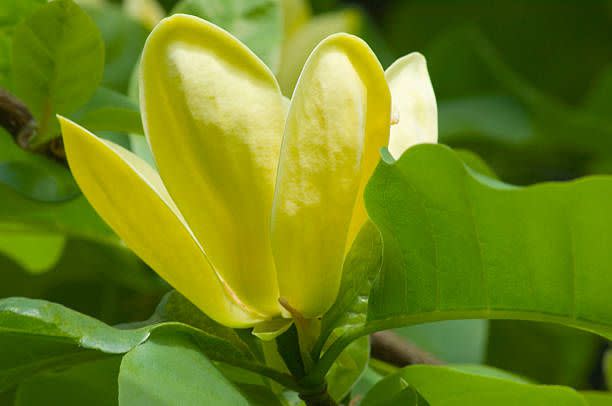Tips for Growing Your Very Own Magnolia Tree in Your Yard

"Hearst Magazines and Yahoo may earn commission or revenue on some items through these links."
With their large, fragrant flowers and white, pink, and purple color palettes, magnolia trees are living proof that nature is pure magic! Although they're a classically Southern plant, the bowl-shaped blooms and pastel petals are more otherworldly than anything. And the best part is that they're easy to grow in pretty much any type of garden! This diverse flowering tree comes in so many varieties, including stubby dwarf trees and towering trees that grow over 100 feet tall. So now that you know the possibilities, why not add the sign of springtime to your own yard?
Magnolias are good as strictly ornamental plants, though they do produce berries that the birds enjoy in fall. They grow in tree or shrub form, and some are deciduous, meaning they shed their leaves, while others remain evergreen. They have showy blooms and some types can live for up to 200 years! To find the right one for your garden, read the plant tag or description before buying. Make sure to choose a variety that can survive winters in your USDA Plant Hardiness Zone, then give your magnolia the right conditions.
So, how do you grow a magnolia tree? Here’s what you need to know.
Where do magnolia trees grow best?
The good news is that magnolias grow just about anywhere in the U.S., though they prefer warmer temperatures and more humid climates. Plant them in an area of your yard that has full sun, which is six or more hours per day, and well-drained soil. Magnolias don’t like wet feet, so don’t plant them in soggy areas in your yard. And finally, pay attention to what the tag or description says is the plant’s mature size, so you give your magnolia plenty of room to spread out in the coming years.
How do I care for a magnolia tree?
Magnolias are as low-maintenance as trees go—as long as you place them in the right spot in your yard. “They bloom heavily and have large flowers that are unequalled,” says Andrew Bunting, author of The Plant Lover’s Guide to Magnolias, and vice president of public horticulture at the Pennsylvania Horticultural Society. “They also bloom at a young age, so even a tiny one-foot-tall plant will likely have flowers the next year. In five years, you’ll typically have a nice small tree.” Most types are moderate to fast growers, which is a plus if you’re an impatient gardener.
They’re generally pest- and disease-free, and they don’t need pruning unless there’s a broken branch. When planting, dig a hole about two to three times the size of the pot. Scruff up the roots a little with your gloved hand so they’ll be encouraged to spread out into the soil (they’re often circling inside the nursery pot). Place the plant in the hole at the same depth it was in the pot, and water well. Add mulch to retain moisture, but don’t mound it up around the plant’s trunk, because that invites pests and disease to attack the stem. Fertilizer isn't necessary.
What types of magnolia trees are there?
When considering which magnolia tree to grow, it's important to understand the different types available, as each has its own unique characteristics and requirements.

The most easily recognized type is the iconic Southern magnolia, an evergreen tree with huge, waxy white blooms that appear in summer and can reach up to 12 inches in diameter. Southern magnolias are evergreen and can grow quite large, so they're best suited for spacious landscapes. It thrives in Southern regions in USDA Hardiness Zones 7 to 10. “The flowers appear sporadically from May to July, but they have an intensely lemony scent with big, glossy green leaves,” says Bunting.

Another well-loved variety is the Saucer magnolia, which boasts large, cup-shaped flowers in shades of pink, purple, and white. A deciduous magnolia tree, the Saucer magnolia is prized for its early spring blooms, which typically grow in Zones 5 to 9. This tree tends to have a spreading habit and can grow to be a medium-sized tree. The downside is that they risk being damaged by frost. Their flowers are prolific and can last a few weeks if it’s not very hot. They can grow to 40 feet tall and wide.
The Star magnolia is a smaller magnolia tree known for its star-shaped, white flowers that bloom in early spring before the leaves appear. Star magnolias have a compact, shrub-like growth habit, making them suitable for smaller gardens and landscapes. They grow about 15 feet tall and wide, says Bunting, and they typically grow in Zones 3 to 10, so they can handle even the most frigid winters.

Yellow magnolias are not as well known as other magnolias, but their buttery yellow blooms in late spring are a real treat. They typically thrive in Zones 5 to 9 and are fast growers. Some are fragrant, and some aren’t, so pay attention to the plant tag or description when buying.
You Might Also Like

